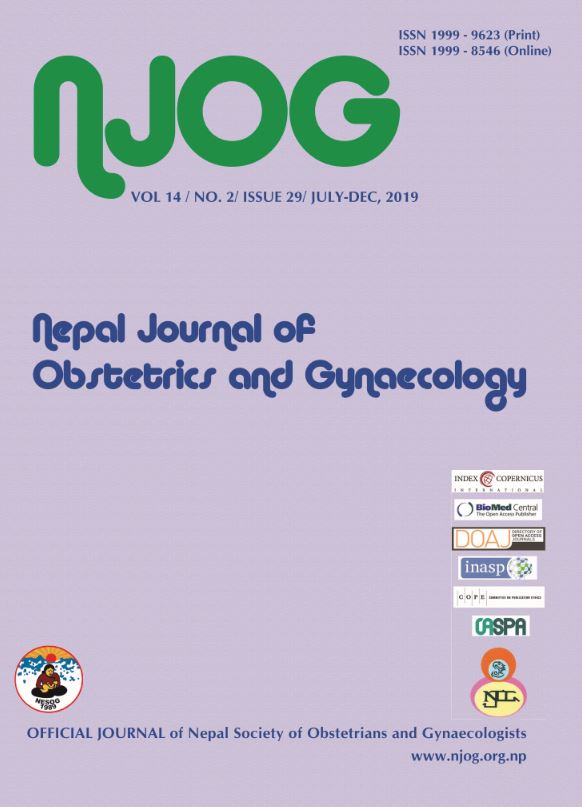Cervical cancer screening by conventional Pap smear versus liquid based cytology
Keywords:
Cervical cancer screening, conventional Pap smear, liquid based cytologyAbstract
Aims: To evaluate Liquid Based Cytology (LBC) diagnostic performance compared with Conventional Pap Smear (CPS) for cervical cancer screening and to compare the sensitivity and specificity of the two cytology methods with gold standard cervical biopsy.
Methods: This is a hospital based cross-sectional study conducted from April 2017 to April 2018 in 110 sample randomly selected at gynecology OPD in Paropakar Maternity and Women’s Hospital. Paired samples (CPS and LBC) were taken from the same patient. Abnormal epithelial lesion detected in LBC and CPS was sent for biopsy. Bethedsa reporting system was followed and data analyzed in terms of diagnostic accuracy.
Results: LBC vs CPS for satisfactory report was 96.4% vs 91.8% while unsatisfactory was 3.6% vs 1.8% (p=0.02). The detection of premalignant lesions was ASCUS 2.7%, HSIL 4.5%, ASCUS-H 1.8% and LSIL 0.9% by LBC while by CPS- ASC-US 0.9%, HSIL 3.6%, LSIL 1.8% and ASC-H 0.9% were detected. The sensitivity and specificity of LBC vs CPS was 100% vs 88% and 81.8% vs 99% respectively. The positive predictive and negative predictive value of LBC vs CPS was 81.8% vs 88% and 100% vs 99% respectively.
Conclusions: Cell pick-up was satisfactory in both LBC and CPS. The sensitivity and positive predictive value of CPS is similar whereas the positive predictive value of LBC is less than its sensitivity. Cervical cancer screening with CPS is effective alternative over LBC by its cost and level of accuracy.
Downloads
Downloads
Published
How to Cite
Issue
Section
License
Copyright on any research article in the Nepal Journal of Obstetrics and Gynaecology is retained by the author(s).
The authors grant the Nepal Journal of Obstetrics and Gynaecology a license to publish the article and identify itself as the original publisher.
Articles in the Nepal Journal of Obstetrics and Gynaecology are Open Access articles published under the Creative Commons CC BY-NC License (https://creativecommons.org/licenses/by-nc/4.0/)
This license permits use, distribution and reproduction in any medium, provided the original work is properly cited, and it is not used for commercial purposes.



